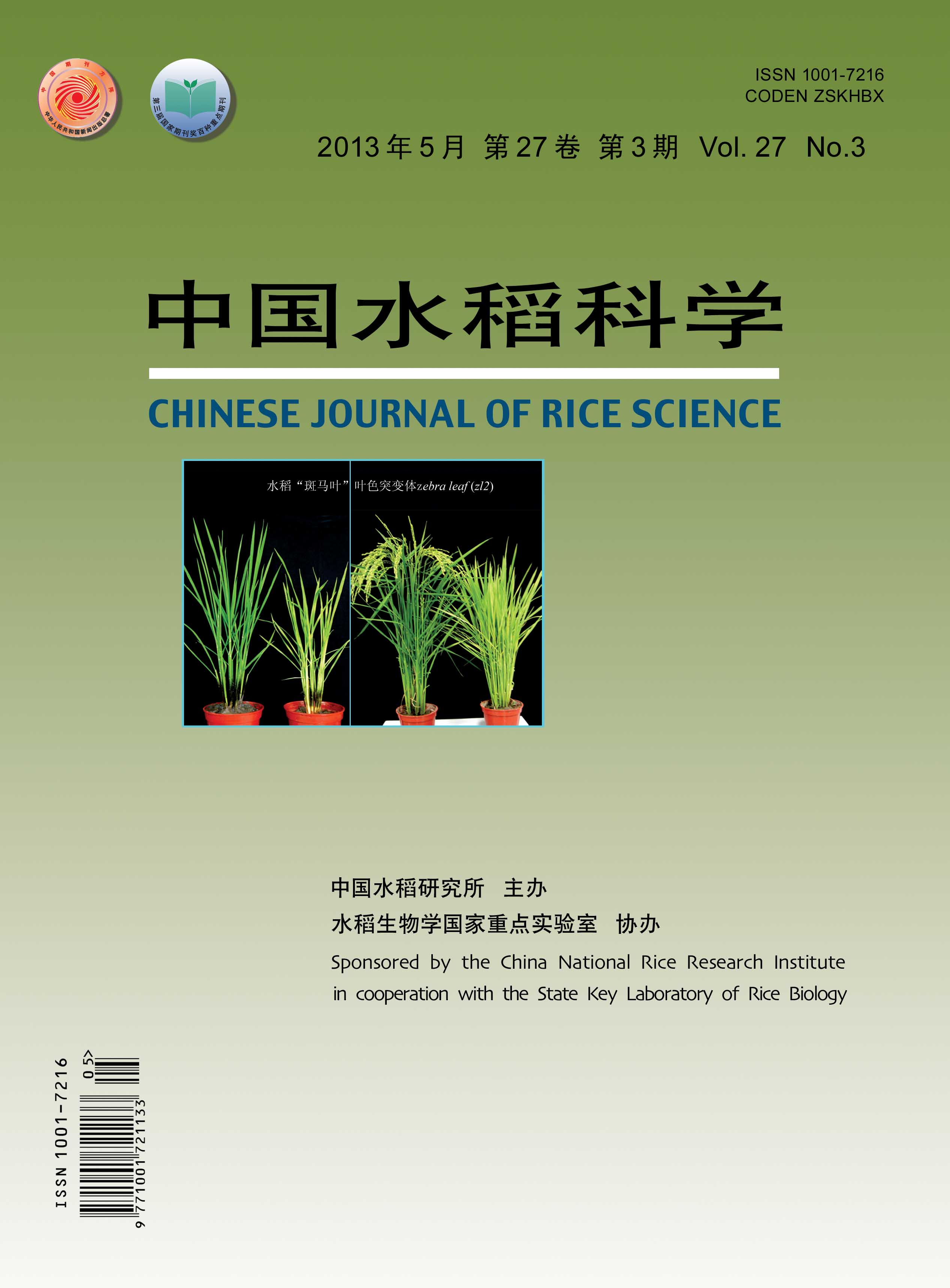|
|
QTL Mapping and Genetic Analysis of Eight Outcrossingrelated Traits and Its Midparental Heterosis in japonica Rice
ZHANG Hong1, JIANG Jianhua1, 2, LIU Xiaoli1, JI Jiazeng1, NIU Fuan1, ZHANGYoufu1,3, HONG Delin1,*
2013, 27(3):
247-258.
DOI: 10.3969/j.issn.10017216.2013.03.004
To understand the types of gene action controlling outcrossrelated traits and its midparental heterosis, QTL mapping of eight outcrossingrelated traits including panicle exsertion degree (PED), flag leaf length (FLL), flag leaf angle (FLA), vertical distance between panicle tip and flag leaf tip (DPFT), second leaf length (SLL), second leaf angle (SLA), vertical distance between panicle tip and second leaf tip (DPST) and length of the first internode (LFI) from the top was conducted using 254 Xiushui 79/C Bao recombinant inbred lines (RILs) and two backcross hybrid populations derived from these RILs. 45 maineffect QTLs (MQTL) were identified in the three populations. The percentage of phenotypic variance explained by each QTL ranged from 1.5% to 80.3%. Among them, 73.3% QTL showed an additive effect, 4.5% a partialtocomplete dominant effect, and 22.2% an overdominant effect. Eightytwo pairs of digenic epistatic QTL (EQTL) were detected in the 3 populations,of which 43 pairs were detected in RIL population, and the percentage of phenotypic variance explained by each pair of QTL ranged from 1.0% to 7.0%, with an average 2.7%. Sixteen pairs of EQTL were detected in XSBCF1 population. Among them, 11 pairs were detected by using XSBCF1 phenotypic value, and the percentage of phenotypic variance explained by each EQTL ranged from 11.2% to 36.8%, with an average 21.0%. Six pairs of EQTL were detected by using midparental heterosis value (HMP), and the percentage of phenotypic variance explained by each EQTL ranged from 33.1% to 76.8%, with an average 55.0%. Twentythree pairs of EQTL were detected in CBBCF1 population. Among them, 16 pairs of EQTL were detected by using BCF1 phenotypic value, and the percentage of phenotypic variance explained by each pair of EQTL ranged from 6.2% to 60.0%, with an average 24.0%. Seven pairs of EQTL were detected by using the midparental heterosis value, and the percentage of phenotypic variance explained by each pair of EQTL ranged from 21.3% to 44.4%, with an average 31.0%. These results showed that outcrossingrelated traits themselves were mainly controlled by multiple loci with additive effects, and the primary genetic basis of midparent heterosis for outcrossingrelated traits was overdominant and epistatic effect in japonica rice.
|

